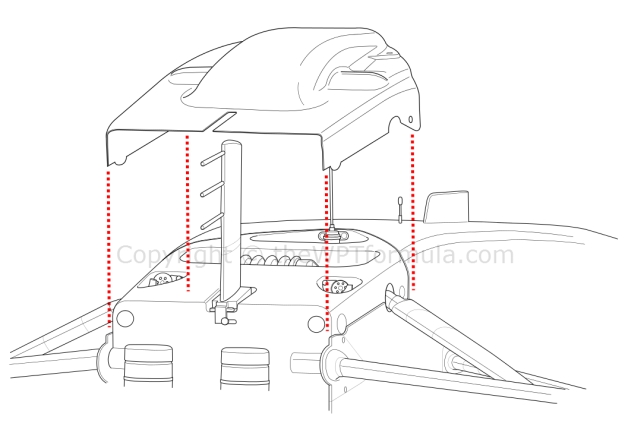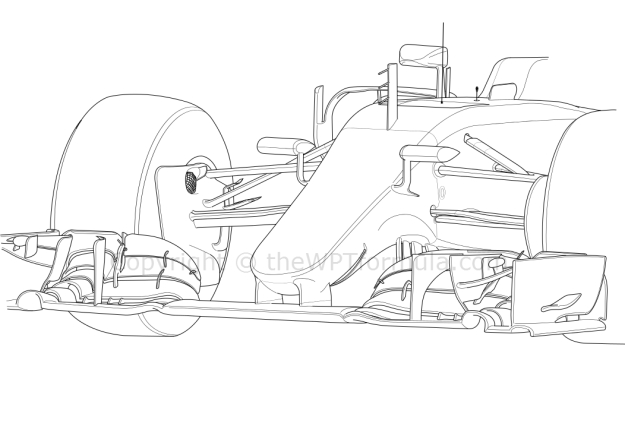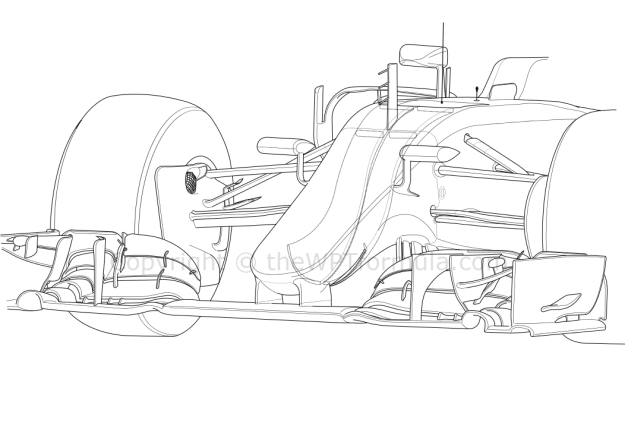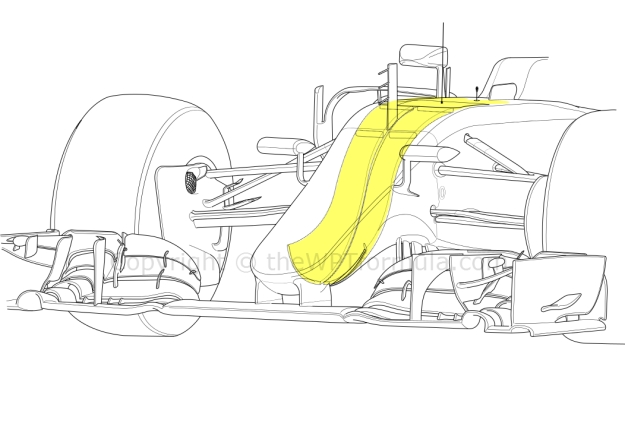
Do you watch MotoGP, the world’s top form of motorcycle racing? If the answer’s no, let me tell you why this coming season will be the best one to start on in many years. All it took was a few rule changes that should make the sport more open and more exciting than it’s been in a while, and since it already kicked ass, that’s saying something.
There are a few major changes headed for the premier class of motorcycle racing next season, and the teams have recently completed testing following the season-ender in Valencia, Spain so now they can finally begin to acclimate to their new regs.
Here are the major changes and a bunch of thoughts, not so briefly.
A Catchall Section For The TL;DR Crowd
No more two-caste system, the lowly Open Class is gone.
There are still some concessions made for “underperforming and/or new factories.”
Michelin takes over as sole tire supplier.
There are “unified electronics,” and everyone is using the same thing, more or less.
These changes will make the entire field far more level, and will remove some of the advantages that have kept the top players on top for so long (no one but Yamaha and Honda have won a race since 2010) while helping teams who aren’t as competitive.
Michelin, the new tire supplier, makes a tire that performs drastically different to the ones they’re used to riding and the new electronics are a huge step back for some and forward for others. This blows the field wide open, mostly in favor of a lot of young talent who’ve been waiting for a shot at the top riders.
Okay, so what does this all mean if you aren’t into MotoGP, but are curious, or perhaps stumbled onto a race after growing weary of the lesser sports, like golf?
Well, imagine if a bunch of NBA teams in the East suddenly got competitive and the Cavs/Bulls/Heat/Celtics couldn’t waltz their way into the playoffs. Now imagine that happened all on the heels of the best and most dramatic season in the past decade.
That’s right.
Shit just got real.

For Those Of You Who Can Be Bothered To Read
You can read the full list of changes the
FIM site here, or
this very dry outline of the changes, but here’s the gist of it.
The first two changes are easy to explain. Put simply, there is no more Open Class, though some concessions do remain. The factory Honda, Yamaha and Ducati teams will have 22 liters of fuel, spec electronics, seven engines per season and limited testing, with engine development halting after the pre-season tests.
Teams who haven’t won a race or gotten a few podiums in the last few years—not Honda and Yamaha, basically—will have unlimited testing and 12 engines per season. They are also allowed to change the design of those engines as they see fit to search for their missing performance or reliability. Fuel and electronics are the same as the other factory bikes.
Ducati, who ran in the Open class last year, have been bumped back up to full Capital F - factory status. Why, though? They haven’t won since 2010, and only recently started getting podium finishes again.
Ducati made the decision to run in the Open Class in 2015 so that they could have unlimited testing and unfrozen engine development (along with more fuel allotted for the race) with their new bike. They wanted no part of the Honda/Yamaha bickering over 20 liter of fuel versus 22 liters and also knew that the 2016 regulations were much closer to what was the 2015 Open Class, so they sacrificed the year to have more freedom developing the new bike. Easy choice.

The next two changes are big enough to warrant their own sections.
All Tires Were Not Created Equal
With the change in tire suppliers comes a change in engineering. The factories unanimously wanted 17 inch tires, the de-facto standard on their production road bikes. This, they say, will help them trickle down technology and justify MotoGP racing programs to their respective suits and muckety-mucks.
Dubious? Well, if the new Yamaha R1 is any indication of the future for production superbikes, they have a very valid point. Maybe this racing business isn’t just pissing away stacks of energy drinks money after all.

“There go the insane lean angles,” the skeptical fan might think. Not so, the aspect ratio is set to remain the same as the 16.5 inch tires. That means the inner diameter will increase by .5 inches, but so will the outer diameter, maintaining that ever-important sidewall.
This will make the tires slightly taller, but the effect of this will be taken into account with the bike design for 2016, so really that’s quite minor.

Michelin isn’t new to the sport, though its past has been somewhat checkered. Known for its “overnight specials,” the French company would make changes to their compounds or molds to suit predicted weather and track conditions and ship them to the tracks “overnight” for their riders on Sunday morning. Its competitor Bridgestone—a Japanese company—was literally just too far across the globe to viably compete with this strategy.
Since they couldn’t compete in the short game, Bridgestone looked long term and developed some amazing tires that were competitive at all tracks in all conditions given the right bike. This won them the championship in 2007 with Casey Stoner and Ducati, which caused a mass-defection of many Michelin riders—headlined by Valentino Rossi —over to Bridgestone for the following season.

Dorna (the group that runs MotoGP) seized the enthusiasm for the new tire as an opportunity to go to a “Spec Tire” format so they could influence (along with input from the teams) what they want from the tire.
Want a tire to stay constant all race and not drop off? Okay, we can make that. Want edge grip? Want resilience? Want all of that with quicker warm-up time? What a stiff carcass or a softer one? Like your local shady back-alley dealer, they can get you whatever you want...for the right price.

Amazing things are achievable when you simply need to fulfill requirements and don’t give a shit about budget suffering and cost. But, since we are dealing with public companies that ebb and flow with the free market, there is bound to be an end to the fairytale. Just like Pirelli is at strains with the teams in Formula 1 right now, so too did this become the state of Bridgestone (the previous tire supplier) and MotoGP in recent years.

Still, Bridgestone’s tires literally changed how people rode motorcycles. Marc Marquez’s style is bred from this, and Rossi’s famous joke from
Fastest about his impossible last corner move on Lorenzo at Barcelona in 2009 will ring for eternity: “At the maximum braking… I say, ‘Please, don’t slide more because we crash.’ But the front stayed. The Bridgestone front tire is a great tire.”
The Michelin front tire, however, seems to be simply a good tire. Maybe it’s decent. It isn’t great. The spate of front ends washing away at the Valencia test bear witness to that. (Seriously, it looked like these dudes were getting sniped mid-corner by a fully sick Call of Duty gamer.)

Do The Michelin Tires Just Suck?
Not necessarily. First and foremost, bikes designed for Bridgestone tires have a ton of rear weight distribution to desperately get drive from a tire that just wants to spin. The Michelin rear tire kicks the dick off the Bridgestone rear. It’s got grip and longevity, providing riders with the drive of a Saturn V rocket.
Here’s the obvious reveal: This extra grip from the rear is pushing the front on these Michelin tires. That’s an easy fix, right? Well, maybe all they need to do is give the front tire some extra weight distribution. But it’s not even that easy an explanation.
Yes, the rear is pushing the front tire, and yes it is causing front-washing lowside after front-washing lowside. But then we’re also seeing video of Marquez in Turn 13 sliding the Honda at 130 mph. The balance has definitely shifted rearward with the 2016 Michelins, but it’s only a problem when you’re either on the brakes too hard and over-riding the grip (like you can do on the Bridgestone front), or in that peculiar middle ground that exists after braking and before getting on the gas.

Before we assign all the blame on Michelin and declare the 2016 season a bust, I’m confident that these teams will acclimate through bike setup and altering their riding styles with enough practice. The Michelin front is a long way from being anywhere near as good at that Bridgestone, but this issue is far more about riding style than tire rubber quality.
The Second Big Change Tempers The Black Magic of Electronics
The other huge change for 2016 is the move to a unified software with the bikes’ electronics. This is via a single hardware supplier: Italian company Magneti Marelli.
Dorna and IRTA (the International Road Racing Teams Association) have been ironing this plan out over the last few years, with Honda most famously dragging their feet through the process, kicking and screaming that they will no longer have much reason for MotoGP if they can’t have proprietary electronics software. This is, they claim, because it is an important link for them with their production bikes.

This is also a complete line of horse shit. Anyone care to look up the specs of a CBR1000RR and tell me what MotoGP-derived electronics are on it? That refresh we keep hearing about for 2017 better be the best thing since the low fuel warning light if they want to keep up that charade.
Honda’s Secret Weapon Goes Bye Bye
What’s the reason for the vitriolic reluctance from HRC? One word: “torductor.” The torductor is Honda’s baby. It first broke cover in 2011, if my memory serves correctly, and
it’s a clever little girl. It is a proprietary device the sits on the front sprocket and measures the actual torque being output from the engine at any given time.
The torductor allows the ECU to “know” the life of the rear tire and predict it’s degradation as those readings change. A brand new rear tire will have X grip and thus Y torque at Z lean angle, therefore it can handle A percent of engine power at B speed and C gear.
This means you are able to ride a 2015 RC213V with the same throttle inputs for every single lap and the bike’s electronic witchcraft near-instantly adjusts the power at the read tire for impossibly near-perfect grip. Every. Single. Fucking. Lap.
However, it’s going away in 2016. All but one sensor on the bikes will be the same for every single team. That proprietary sensor is to allow teams to explore different avenues of development.
Any additional software capabilities have to be unanimously requested by Honda, Yamaha and Ducati (Suzuki, Aprilia and KTM are out in the cold on this, because they’re “new” and IRTA want to provide some brownie points to Honda, Yamaha and Ducati for sticking around so long).

So that means if Honda wanted a torductor-like device to operate with the Magneti Marelli software, they need to propose this to Yamaha and Ducati and get their unanimous support to petition IRTA to add that capability. So even if that support has already been given, it would now be available to anyone who wanted to create a torductor and code for it (the actual coding is still done within each factory and team). TL;DR, it would no longer be the current advantage.
“But what about that one free proprietary sensor each factory gets? Honda could use that slot for the Turducken!”
Not in the same capacity. If it stays around, it’s data won’t be processed fast enough by the ECU for it to be nearly as effective. Cecchinelli also made a very big point, reiterating it for added emphasis, that nothing will be self-learning. There is no capability for that (rather, it was intentionally designed out) with Magneti Marelli’s unified electronics. His example? They (the teams) would no longer have the capability, let’s say, to monitor the degradation of the rear tire and automatically adjust the electronics to suit it. Boom, shots fired.
(Also, while the Turducken was very, very impressive—like,
Batman’s secret hideout behind the waterfall impressive—it’s not something that makes me buy into their sob story about taking away proprietary software killing their creativity for road bikes. Give us that on a CBR or get the fuck outta here with that noise, Honda.)
Here’s Why All This Shit Matters
This is a case where free-development and huge budgets drove a motorsport to basically be contested between two factories with everyone else just making up the numbers.
By reducing electronics to a safety net more than an outright performance multiplier, and by giving everyone new tires that are a bit more like consumer products, the racing should be much tighter. With bikes becoming a little more unruly and mistakes more likely to happen, the results will be determined by the riders more than the engineers.

Not only that, but we get to watch as these teams try and accommodate and change their bikes and styles to fit - all with the addition of a bunch of new players who just got a whole lot more competitive.
A more level playing field, with the top dudes learning to compete with less special treatment and up-and-comers on suddenly more competitive machines is fantastic for the sport.
Here Are The Players
It’s very early in the testing days and the lap times mean less than Bieber’s claims about finding Jesus, especially with every team running completely different testing programs.
Honda, Yamaha and Ducati Factory teams will still be the crème de la crème. Suzuki though, is a major dark horse for 2016, with Maverick Viñales lapping quicker than his qualifying time from the 2015 season ender the previous week, ending the test in P2.
Aprilia will finally have a fully redesigned RS-GP, their current bike still based off a production RSV4 engine and frame (even though they have languished, building their GP entry off a bike you can go buy is SUPER impressive to me). KTM’s 2016 will be spent testing and getting up to speed for their 2017 entry into the fray.
Some teams didn’t touch the new electronics, only rode the new tires, while the other went hard in the paint – riding with all new everything #yolo. (People still say that, right?)

By and large though, try to follow along with what’s happening here:
Yamaha
The Factory Yamaha team was on next year’s prototype bikes with the new electronics. Meanwhile the Tech 3 satellite Yamaha team JUST got access to the last year’s Factory hand-me-down bikes of Rossi and Lorenzo. Bradley Smith spent a good amount of the testing spending time on last year’s bike with last year’s electronics to see the differences compared to his satellite bike this season (basically a factory bike from two years ago).
Pol Espargaro though, spent a good chunk of time on his familiar 2015 Tech 3 satellite bike so he could solely focus on acclimating to the Michelin tires. For the afternoon on Day 2 he switched to the new bike (’15 factory hand-me-down) with the new electronics and, of course, Michelin tires. And boy was he was fast - ending up in P9 just behind Rossi, and remarking how he finally has tires that suit his style of riding.

Honda
Honda has a whole different kettle of fish. The RC213V had a far too aggressive engine last year, which caused the rear to spin too much on corner exit and thus kill drive (and destroy tires). The aggressive engine didn’t stop there though, as it was also a tightrope of laser beams under braking. Too much engine braking and the ass tried to trade places with the nose. Too little engine braking and you freewheeled your way into overloading the front tire. See: every crash on an RC213V in 2015 minus
that one where Marquez ran into Rossi.
Initial thoughts are that they are not much better off for 2016, but for different reasons. First is they are probably helped by the extra grip from the rear Michelin, but will over load the front tire quicker. Especially Marquez, who crashed quite a few times on his way to getting the fastest lap in testing. Second is that, so far, the new engine for 2016 isn’t much better at being “gentler.” Honda have always chased horsepower and with Ducati beating them on straight line speed and Yamaha beating them in corner speed, HRC is fighting a battle on multiple fronts.

And then there is Marc Marquez himself. He is so unique in his approach that no other rider has been able to maximize the bike like him. Or we can phrase that another way: No other rider is able to ride a bike developed by Marquez, because it’s a psycho machine and he’s a psycho rider.
Ducati
Scott Redding left Honda, instead slotting in with Pramac Ducati alongside Petrucci on new GP15s. Redding was instantly happier. The Ducati is now the hot bike in MotoGP. It might not have come good on it’s full potential yet, but a lot of teams and riders have a feeling that breakthrough is right around the corner. Interestingly, even with it’s rocket booster engine, corners are also something the Ducati GP15 excels at.
The top Ducati rider is still The Maniac, Andrea Iannone. The moniker suits him from Moto2, but his stellar season has been one of maturity and temperance. In an odd way, his unfortunate shoulder injuries limited how physical he could be on the bike and he was forced to learn that smooth is fast in MotoGP.
Suzuki
What about Suzuki? I haven’t heard confirmation yet on whether Suzuki used 2016 unified electronics to set their fast times, but HO-LY-SHIT. Viñales has been anointed a “Next Generation Alien” by many peers, including his idol Valentino Rossi.

He was P2 behind Marc Marquez. Aleix Espargaro was P4, right behind Pedrosa. It appears the great-handling Suzuki is able to use the grippy rear Michelin quite well, but both riders will still be pining for a seamless gearbox and some more power.
Let’s hope Suzuki make good on the promise they’ve shown so far, to be so down on power and have no seamless box yet, but still be so competitive speaks volumes for the balance and DNA of the GSX-RR bike.
Also, this: Maverick Viñales. Maverick. Did his mother not like him or something? Look, anyone who is named after Top Gun and becomes a MotoGP racer is amazing. Plus he’s a nice dude and is one of the most exciting racers in the world, and he just finished P2 in the testing times on an underpowered, underdeveloped Suzuki GSX-RR.
Yes, we all want to see Rossi win that 10th title, but as the years tick by and exciting racers like Maverick Viñales, Pol Espargaro, Jack Miller and Andrea Iannone are waiting in the wings… well, 2016 should be the start of a very exciting future for MotoGP.
The racing should be closer, the electronics a little less Sci-Fi, and stir that all up with a new tire that will lead to architecture changes with the bikes and I’m waiting with bated breath.

Photos: MotoGP.com



